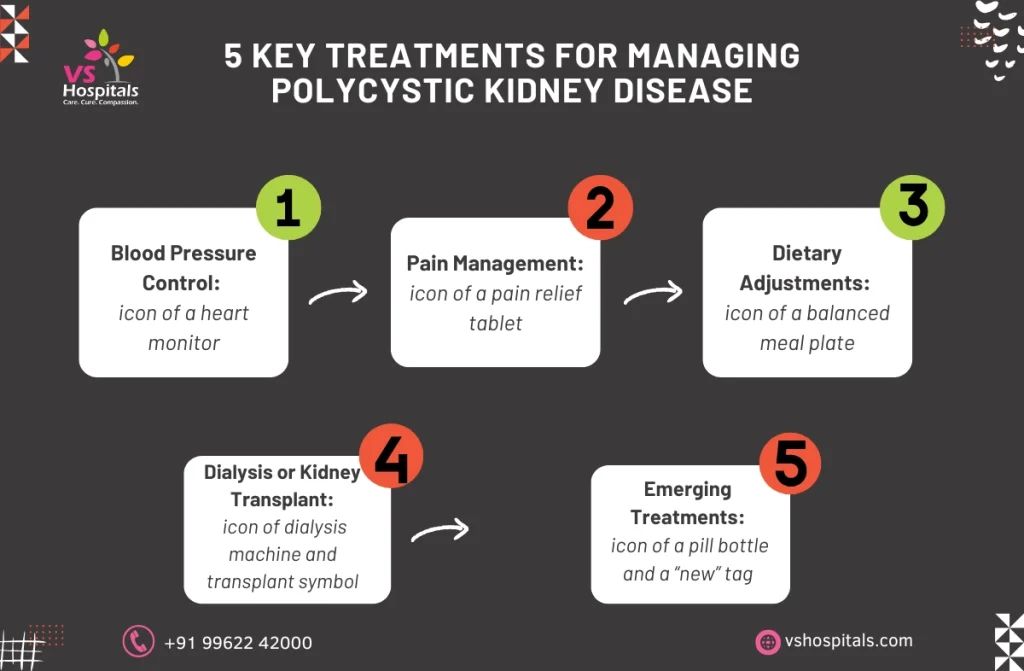Polycystic Kidney Disease Treatment is essential for managing this genetic condition, where clusters of fluid-filled cysts develop in the kidneys, potentially affecting liver function and sometimes necessitating liver transplant surgery. Understanding the available treatments and management strategies empowers individuals and their families to navigate PKD effectively, enhancing quality of life and improving outcomes. This comprehensive guide explores various treatment options, including the latest advancements in polycystic kidney disease management.
What is Polycystic Kidney Disease (PKD)?
Polycystic Kidney Disease (PKD) is a genetic disorder characterized by the development of numerous fluid-filled cysts in the kidneys, leading to enlarged kidneys and reduced function. These cysts can also form in other organs, such as the liver, sometimes necessitating liver transplant surgery. PKD is a significant cause of chronic kidney disease and can progress to kidney failure. Effective polycystic kidney disease treatment focuses on managing symptoms, slowing disease progression, and addressing complications to enhance patients’ quality of life. Understanding PKD is crucial for implementing appropriate management strategies and exploring the latest treatment options.

Treatments for PKD
Managing Polycystic Kidney Disease (PKD) involves a multi-faceted approach designed to control symptoms and slow down disease progression. Key strategies include:
- Blood Pressure Control: Keeping blood pressure in check is essential, as high blood pressure can worsen kidney damage. Medications and lifestyle changes help maintain optimal levels, reducing strain on the kidneys.
- Pain Management: PKD-related pain can be intense, particularly in the lower back or abdomen. Over-the-counter pain relievers, prescription medications, or procedures to shrink cysts can help manage discomfort.
- Dietary Adjustments: A low-sodium diet, rich in fruits and vegetables, supports kidney health and reduces fluid retention. Limiting caffeine and protein intake may also help minimize stress on the kidneys.
- Dialysis or Kidney Transplant: For advanced PKD cases where kidney function severely declines, dialysis or a kidney transplant may be necessary to replace lost kidney function.
- Emerging Treatments: Newer medications like tolvaptan slow cyst growth, representing promising advancements in polycystic kidney disease management, offering patients improved quality of life and longer kidney function preservation.
Types of Polycystic Kidney Disease (PKD)
Understanding the different types of PKD is crucial for effective polycystic kidney disease management. The primary forms include:
- Autosomal Dominant PKD (ADPKD): This is the most common type, typically manifesting in adulthood. It often leads to kidney enlargement and may require interventions like liver transplant surgery if liver cysts are present.
- Autosomal Recessive PKD (ARPKD): A rarer form that appears in infancy or early childhood, leading to serious complications.
- Acquired Cystic Kidney Disease (ACKD): Develops in individuals with long-term kidney issues, not inherited genetically.
Recognizing these types aids in tailoring the latest treatment for polycystic kidney disease to individual needs.
Signs and Symptoms of PKD
Recognizing the signs and symptoms of polycystic kidney disease (PKD) is crucial for early intervention and effective management. Common indicators include:
- High blood pressure: Elevated blood pressure is often the first noticeable symptom of PKD.
- Back or side pain: Discomfort or pain in the back or sides can result from enlarged kidneys or cyst complications.
- Blood in urine: Hematuria may occur due to cyst rupture or kidney stones.
- Frequent urinary tract infections (UTIs): Recurrent UTIs can be a sign of PKD.
- Kidney stones: The formation of stones is more common in individuals with PKD.
If you experience any of these symptoms, consult a healthcare professional for appropriate polycystic kidney disease treatment and management.
Causes of PKD
Polycystic Kidney Disease (PKD) is primarily caused by genetic mutations that lead to the development of multiple fluid-filled cysts in the kidneys. These mutations disrupt normal kidney function and can also affect other organs, such as the liver. Understanding the genetic basis of PKD is crucial for effective polycystic kidney disease transplant success rate.
- Autosomal Dominant PKD (ADPKD): Caused by mutations in the PKD1 or PKD2 genes, ADPKD is inherited from one affected parent. Each child has a 50% chance of inheriting the disorder.
- Autosomal Recessive PKD (ARPKD): Resulting from mutations in the PKHD1 gene, ARPKD requires both parents to carry the mutated gene. Each child has a 25% chance of developing the condition.
In some cases, PKD may arise from spontaneous genetic mutations, even without a family history. Recognizing these genetic causes is essential for early diagnosis and implementing the latest treatment for polycystic kidney disease.
Diagnosis of PKD
Diagnosing Polycystic Kidney Disease (PKD) is crucial for effective management and treatment. Healthcare providers employ several methods to confirm a PKD diagnosis:
- Imaging Tests: Ultrasound is commonly used to detect cysts in the kidneys. For more detailed images, CT scans or MRIs may be utilized.
- Genetic Testing: Identifying mutations in the PKD1 or PKD2 genes can confirm the diagnosis, especially in individuals with a family history of PKD.
Early and accurate diagnosis is essential for implementing appropriate polycystic kidney disease management strategies, potentially improving the polycystic kidney disease transplant success rate and exploring the latest treatment for polycystic kidney disease.
Conclusion
Polycystic Kidney Disease Treatment involves a comprehensive plan that includes lifestyle adjustments, medication, and sometimes even transplant surgeries. With advancements in medicine, VS Hospitals is dedicated to providing the best possible care and latest treatments, helping patients lead healthier lives even with PKD. Reach out to us today to explore personalized treatment options for you or a loved one.
Read also Survivorship after cancer
